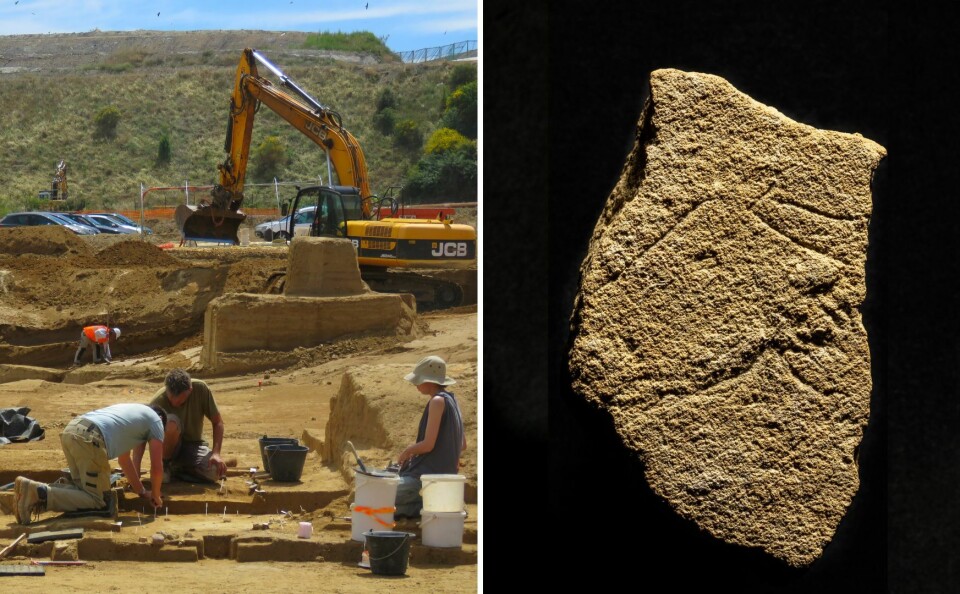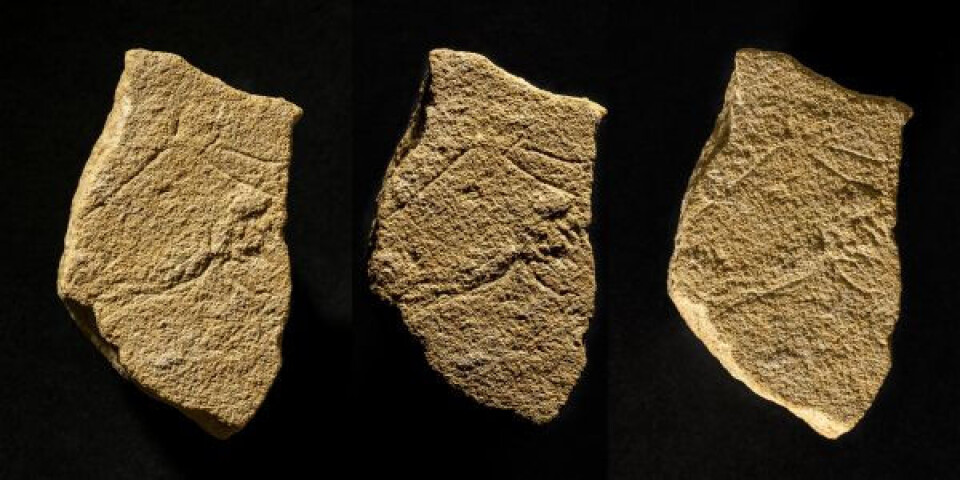-
The origins and meaning of tirer les marrons du feu
As Christmas approaches, we look at a phrase to describe someone who takes advantage of a situation
-
Saint-Aubin-des-Châteaux: rural French village with historical and natural charm
Step back in time to explore Neolithic, Roman, and Templar traces... but you will not find any châteaux
-
Owners of French mill seek help tracing history
'We are looking for old photographs from before it closed,' say couple who restored the building
Bellegarde dig shows France’s evolving approach to archaeology
The discovery of 20,000 BC artefacts highlights how the treatment of archaeological sites has changed

In March this year, significant artefacts dating back to the beginning of the Magdalenian period (some 20,000 years BC) were confirmed at a site in Bellegarde (Gard) in south-east France.
The age of the pieces makes them some of the oldest artworks known from this period, alongside the famous paintings in the Lascaux cave.
Included in the haul were engraved limestone slabs. One featured a single horse, including its nostrils, mouth, mane, ears and more. Another showed three horses with eyes, jawbones and cheeks.

Photo: 20,000 BC engraved limestone slabs featuring horses profiles found at Bellegarde dig; Credit: Denis Gliksman
While exciting enough in their own right, the excavations also shine a light on France’s chequered efforts to better acknowledge and protect culturally and historically important archaeology, which have only started to advance in the last 60 years. Before then, it is unlikely these sorts of finds would have been preserved or studied.
Read more: Works at French train station uncover Roman-era cemetery
Protecting archaeological finds has chequered past
The discovery in 1685 in Houlbec-Cocherel, Normandy, of a sandstone polisher, furniture, axes, flint tools and 20 skeletons from the Neolithic period is considered the first archaeological operation in France.
Since then, there have been thousands of finds, but highlighting their significance and securing their future has not always been easy.
In the early days, it was driven by the determination of just a handful of individuals.
Jacques Boucher de Crèvecœur (1788-1868), for example, is hailed as one of the founders of prehistoric science and enhanced the theories of human evolution.Yet his work was often dismissed by peers.
Even Charles Darwin reportedly remained sceptical until members of the Commission of the Geological Society of London visited and validated his work, bringing him wider recognition.
Bastille demolition triggers new thinking
The idea of a monument historique can be traced back to when the Bastille was to be demolished.
Aubin Louis Millin (1759-1818), a librarian and scholar who specialised in archaeology, used the term in a report to the Assemblée constituante in 1790.
In the same year, the Monuments Commission was tasked with studying “the fate of monuments, arts and sciences”, and not long after, in 1804, the Académie celtique was founded, with a focus on researching a range of subjects up to and including the 16th century.
Read more: How the Revolution gave France a head for heritage conservation
Legal disaster in 1913
A law on monuments historiques passed in December 1913 omitted the protection of non-monumental prehistoric and historical remains.
As a result, various archaeological sites were open to the public if the landowner and excavator agreed.
For many years, the Lascaux cave, discovered in 1940 in Dordogne, welcomed up to 1,500 visitors per day to see its ancient wall paintings.
It was closed in 1963, after carbon dioxide, heat, humidity, and other contaminants produced by the visitors were shown to have visibly damaged the paintings.
The Carcopino law was the first on archaeological excavations. Introduced by the Vichy regime in 1941, it insisted on excavations being overseen by the state and any valuable discoveries had to be declared.
Pivotal excavation in 1964
Another breakthrough came with the excavation of Pincevent (Seine-et-Marne) in 1964 by a team led by palaeontologist and anthropologist André Leroi-Gourhan.
Along with André Malraux, France’s first minister of culture, he transformed it into an excavation school, where prehistory students from the Université de Paris 1 could train.
Malraux was a crucial piece of the puzzle and, during the 1960s, two other events instigated further progress.
In Marseille, plans to renovate land behind the Palais de la Bourse were already under way when the remains of a necropolis, Roman docks, port facilities and ships were discovered.
Then-mayor Gaston Defferre wanted to continue the work – potentially removing the artefacts and placing them elsewhere, but Malraux stepped in with a decree to ensure construction was stopped and excavation could begin.
In all, 10,000m² of remains were preserved.
Read more: Explore the sites to see the legacy of France’s glorious Roman past
Notre-Dame car park unearths Gallo-Roman objects
The second victory for archaeologists came during the development of an underground car park adjacent to Notre-Dame cathedral, which unearthed objects dating back to the Gallo-Roman period.
Official excavation was secured between 1965 and 1972 and the site was eventually transformed into the Archaeological Crypt of Notre-Dame.
Both events inspired Malraux’s creation, in 1973, of the Association pour les fouilles archéologiques nationales (Afan), which formed part of the Ministry of Culture and was responsible for conducting rescue archaeology work.
Reform after developer destroyed Aveyron site
“Until the 1970s, rescue excavations were rare,” says Dominique Garcia, president of the Institut national de recherches archéologiques préventives (Inrap).
“It is only recently that preventive (or rescue) archaeology has become established.”
In 1997, the so-called ‘Rodez affair’, in which a developer destroyed a large area of a Gallo-Roman site in Aveyron, revealed the limits of the legislation and funding system for rescue archaeology.
Reform became necessary and a new law was implemented in 2001 to address past problems.
It saw the creation of a tax to fund preventive evaluations and excavations, and created Inrap, a public administration body, in 2002.
Inrap is now the largest archaeological research structure in Europe with 2,300 employees and a budget of €175million.
Read more: Metal detectorists in France reject ‘looter’ label in French crackdown
Inrap overseen work on 50,000 archaeological sites
“Inrap plays a decisive role. It is the major player in the exploration, excavation, study and development of our national heritage, from prehistory to modern times,” says Mr Garcia.
“It is involved in preventive archaeology, which means that we excavate and study sites that could be destroyed by land development.
“The main challenge lies in the fact we have to adapt our know-how to new forms of development, on land or under the sea, in France or overseas.”
Since its inception, some 50,000 sites have been explored or excavated and, says Mr Garcia, the future looks bright.
“The experience we have acquired over the last 20 years is truly unique,” he says.
“I hope we will be able to share our expertise with other countries and, in France, continue to save sites that may be damaged, not only by land development but also climate change – on the coast, in high altitude areas and in places with a high risk of flooding.”
Read more: Climate change threatens ancient drawings inside French cave
Archaeological events near you
From June 16-18, members of the public can take part in the annual European Archaeology Days initiative, coordinated by Inrap.
It offers a chance to meet archaeologists, access excavation sites and laboratories, and, for youngsters, to take part in creative workshops.
Visit the website for more information.
Related articles
Prehistoric skeleton discovery keeps French village on the global map
Two saints buried in one tomb still draws pilgrims to French priory
Mysteriously skewed Brittany cathedral continues to confound experts
























